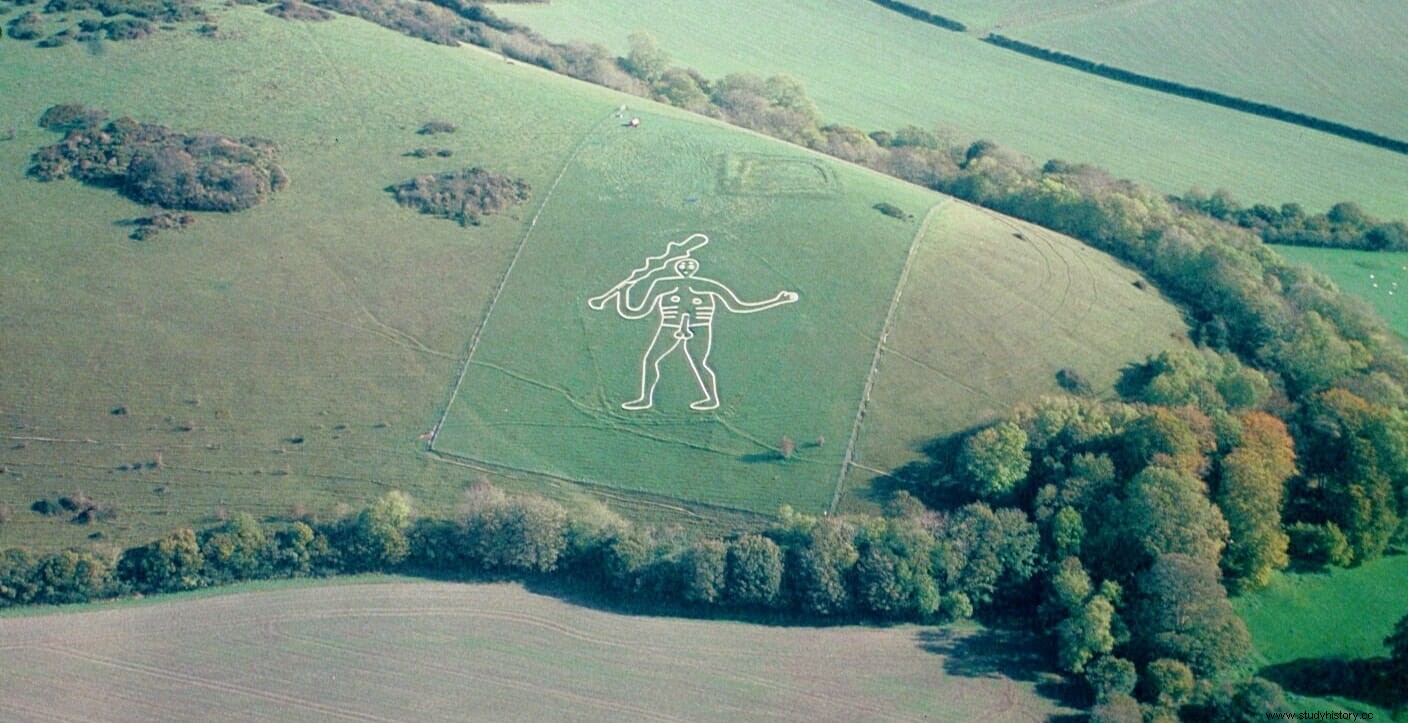Everyone knows or has heard of the Nazca Lines, ancient geoglyphs found in Peru. There are hundreds of huge figures traced by the ancient culture of the same name on the ground, and they can only be seen in their entirety from the air.
But perhaps what many do not know is that in Europe there is also something similar. Specifically in the United Kingdom there are what are called hill figures . They are not very numerous but they are old, one of them from prehistoric times and the rest of those that survive from a few centuries ago. And just like the Nazca Lines, not much is known about them. Neither who made them nor what they mean.
In this case, its elaboration is based on ditches on slopes covered with grass, so that the rocky substrate is visible, giving shape to the figure. And they are meant to be seen from a distance and not from a perpendicular position.
Many of these hill figures have been found. For example, in the county of Wiltshire alone there are up to 14 white horses. But most are of recent manufacture, from the 17th century, and even current, such as the one made to commemorate the arrival of the millennium a few years ago. The most famous and notable are the following three:
The White Horse of Uffington
It is the oldest of all the hill figures. The ditches that form the lines of the silhouette expose the chalk rock floor, giving it its characteristic white color, and making the figure more vividly visible. Of course, over time the chalk turns black, and that is why until the 19th century it was customary to rebuild the horse every year by adding more chalk.

In 2008 even 17 tons had to be added to prevent it from disappearing into the undergrowth on the hill.
Its meaning is not known, although it is thought that it could have been political since Iron Age coins have been found that show the horse. It is also not known if what it represents is actually a horse or another animal. If it is indeed a horse, it may be related to solar cults, fertility or the end of time, all of which were associated with white horses in the mythology of many ancient peoples.
It is known with certainty that it is a prehistoric work, already documented and cited by medieval sources, which could date from about 3000 years ago .
The giant of Cerne Abbas
It is believed that its meaning is related to political satire, and that its creation dates back less than 400 years, since no medieval source that mentions the hill says anything about the giant. It is located near the town of Cerne Abbas, in Dorset. It is about 55 meters high by 51 wide, and the trench that represents its lines is 30 centimeters wide and about the same depth.

What is most striking is the explicit representation of the organs and the decoration of the torso, perhaps tattoos, of the figure carrying a huge mace.
A study carried out in 1996 found that the figure must originally have been wearing a cloak in its left hand, something that was corroborated by the 2008 archaeological study. This could indicate that it originally represented a hunter, probably a Hercules with the skin of a lion. of Nemea . This could also indicate that its age is older than previously recognized.
It has also been suggested that the giant's unusual appearance would be the result of the fusion of the circle that represented the navel with the smaller, original member.
The tall man from Wilmington
It is situated on one of the slopes of Windover Hill, near the town of Wilmington. It is 72 meters tall and is designed to appear proportionate when viewed from the ground.

The first news of the man from Wilmington dates back to 1710, when John Rowley made a drawing of it. However, it differed a bit from the current one. The lines were not so marked, being only a small shadow on the grass, and the head seems to be wearing a helmet .
Another drawing from 1766, this time by Sir William Burrell, shows him carrying a rake and scythe , instead of the current rods.
In fact, until 1874 the silhouette was only visible under certain light conditions. But that year an antique dealer had the brilliant idea of placing yellow bricks along it, which he later cemented together.
Studies carried out by the University of Reading suggest that its origin must be sought between the 16th and 17th centuries.
